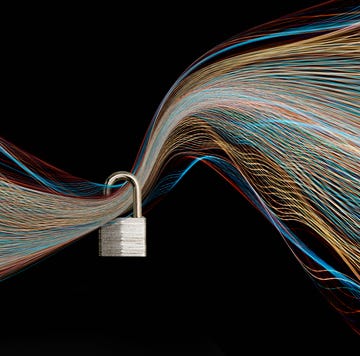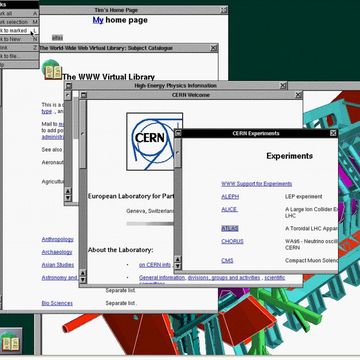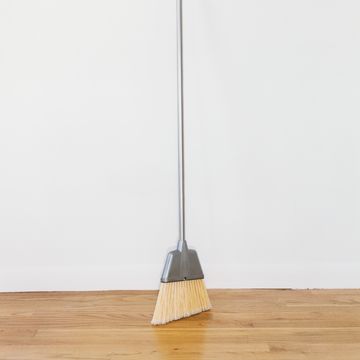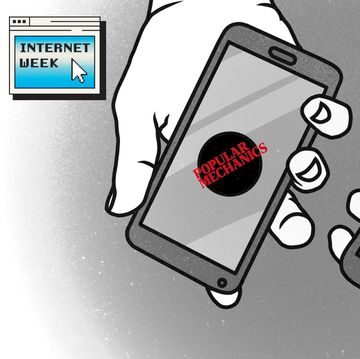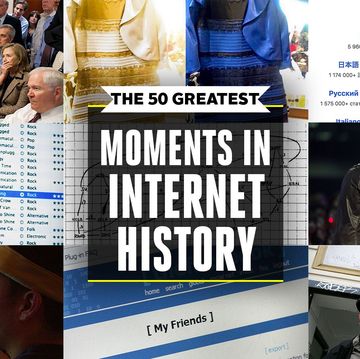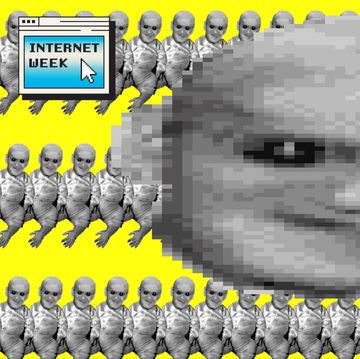We're all email power users, based purely on the hundreds, if not thousands, of messages we get each week. So it's easy to assume that we all know the best tips and tricks for managing that deluge: Keep your inbox lean, set up multiple accounts to stay organized, devise a strong password. It turns out that some of the conventional wisdom is outdated, and most of it is incomplete. Here's a rundown on those misconceptions and the best tools for making your email efficient—and secure.
MYTH: The right way to deal with email overload is to clear out all your inbox notifications.
REALITY: Folders, tags, and filters can be better organizational tools.
There's a push lately to reach "inbox zero," which is exactly what it sounds like. That empty-inbox feeling may sound satisfying, but for someone who receives hundreds of emails a day, it may be more trouble than it's worth. So here's a compromise: an inbox that holds the messages you need to see but keeps them all easily searchable and structured, with distinct folders and tags. In other words, your messages are not entirely filed away; they are organized. "Rather than having all the emails in your inbox at once, crowding your focus, keep it lean," suggests Aye Moah, chief of product and cofounder of Baydin, the company behind the email add-on Boomerang. She's also a proponent of filtering your messages according to rules (parameters such as who the sender is or key words in the subject line) that require manual setup but then work on their own. Gmail, Outlook, and Yahoo all let you create rules and filters, either in settings or directly in the inbox. For instance, you might create a filter that finds all messages that contain "Bank of America" or "Citibank" and have a rule that automatically applies the label Finance. You can also create filters to tag every email from a certain sender or to automatically archive messages with attachments.
MYTH: Setting up email aliases isn't worth the trouble.
REALITY: Sure, it's a pain, but it could make your life easier.
Aliases are different addresses that connect to your main account; they can help organize your inbound messages. They come in two forms: completely different usernames, and disposable email addresses with various separators between the base name and the tag. (Not every email service allows for both approaches.) Why create aliases? They can turn an address into something more professional-sounding, or group certain emails according to their purpose. For instance, my main email could be rachel@gmail.com, and rachel+shopping@gmail.com, an alias, could be the address I use with online retailers. I would still get all emails from retailers in my rachel@gmail.com inbox, but rachel+shopping@gmail.com would become a searchable term, which is useful. Additionally, if I had created a completely new username, such as rzashopping@outlook.com, to give out to online retailers, I could decide to delete it later to stop getting their emails.
MYTH: Using a strong password will secure your email account.
REALITY: A strong password is just the start. Use extra measures that probably already exist in your email system.
Enable two-step verification. This adds a second factor to your password, usually a code sent to your phone. With that added layer of security enabled, every time you sign in, you'll have to check your phone for the second key, which can be texted to you or retrieved in an app. It's slightly annoying but worth it. You can streamline the process by choosing to "trust" a specific computer; the system will require only a password and not the extra code if you are logging in from that machine. Additionally, application-specific passwords (strings of letters and numbers randomly generated by the email service itself) let you secure third-party applications that work outside a browser, usually on a different device, and which aren't compatible with two-step verification—such as Apple Mail, Android Mail, and Outlook. Then within your Settings page, you can manage the apps you've connected to your account. So if you lose your mobile device or stop using an app, you can simply remove access to the app to eliminate the security risk.
MYTH: You can only manage your email in real time, when you're in front of your computer or using your mobile device.
REALITY: Add-ons can time-shift your email.
Besides making it simpler to keep track of received messages, a supercharged email account can also make it easier to manage incoming mail. The key to that is getting emails only when you can deal with them. Of course, you can't expect everyone writing to you to wait until a designated time, but you can hide emails and have them automatically reappear when you want them to. "Email is a pretty old technology, relatively speaking," Baydin's Moah says, "and we haven't really come up with new tools to handle the load of email we're getting today." Her company's Gmail-only Boomerang plug-in does several things, but the primary use is to schedule outgoing emails to be sent later. Boomerang also has a snooze feature, like the one popularized by the Mailbox iOS app: The feature temporarily hides an email and pops it up in your inbox again at a set time, preventing emails from clogging your inbox until you know you'll be able to respond. You can also have Boomerang remind you to follow up on messages to which recipients have not yet responded. The snooze feature hides emails that you select; if you prefer to have all your emails come to you at a specific time, Inbox Pause (for Gmail only) will do the trick. It adds a Pause button to Gmail, which will hide your email until you choose to see inbound messages again.
MYTH: If Google wants to read your Gmail messages, there's nothing you can do to stop it.
REALITY: Encryption can block outsiders, including your email provider, from snooping.
Basic encryption through the HTTPS protocol comes standard in Gmail, Outlook, and AOL and can be turned on in Yahoo mail. [Editor's note: As of this week, HTTPS is now the default in Yahoo mail as well]. But that only makes it harder for hackers to steal data as it moves between the email server and your browser. Micah Lee, a staff technologist for the Electronic Frontier Foundation, says, "The only way to truly keep your email private from email services themselves is to use OpenPGP email encryption." (PGP stands for pretty good privacy.) With free services such as Mailvelope (for Gmail, Yahoo, and Outlook), any recipient you send an encrypted message will have to enter a password to read it.
Tips for the Big 3 of Email
GMAIL
-For about 5 seconds after you send a message, Gmail lets you unsend it. To enable the feature, go to Labs in Settings and enable Undo Send.
-Worried that you're signed in to your email on another computer but can't remember where? Scroll to the bottom of any gmail.com page, and look for the Details link under Last Account Activity. There you can see any open sessions and sign out everywhere at once.
OUTLOOK
-Right-click on a message in the inbox to reveal an Outlook-specific context menu, not just your browser's default menu. Below the standard items you'd expect to find—Reply, Forward, Archive, etc.—you'll see ones that are for a specific sender. Among these is Schedule Cleanup, which lets you automatically move or delete email from that sender after a set number of days. That way you'll only see more recent messages, reducing your overall inbox clutter.
YAHOO
-Perhaps the best secret feature in Yahoo is Not My Email, which the company launched after it began letting users claim dormant addresses. (The unintended side effect of that was people receiving messages not meant for them.) The button, which you can apply to messages without opening them, returns unwanted email back to the sender. Eventually, Not My Email also trains your system: If the subject line contains any hint that the email doesn't belong to you, you'll never see it surface.

Rachel Z. Arndt is the author of the essay collection Beyond Measure. Her writing has appeared in Quartz, The Believer, Fast Company, and elsewhere. She lives in Chicago.

